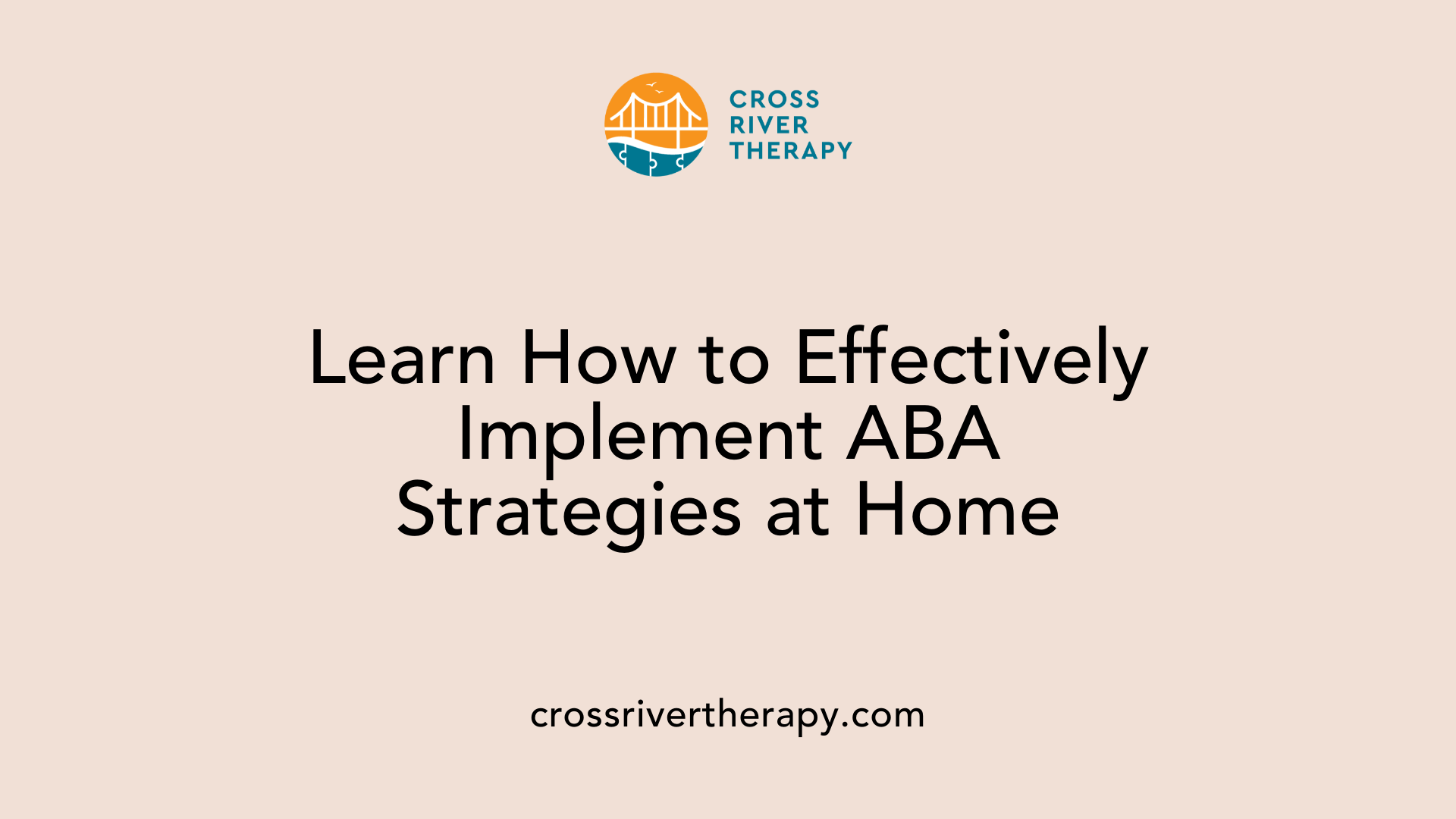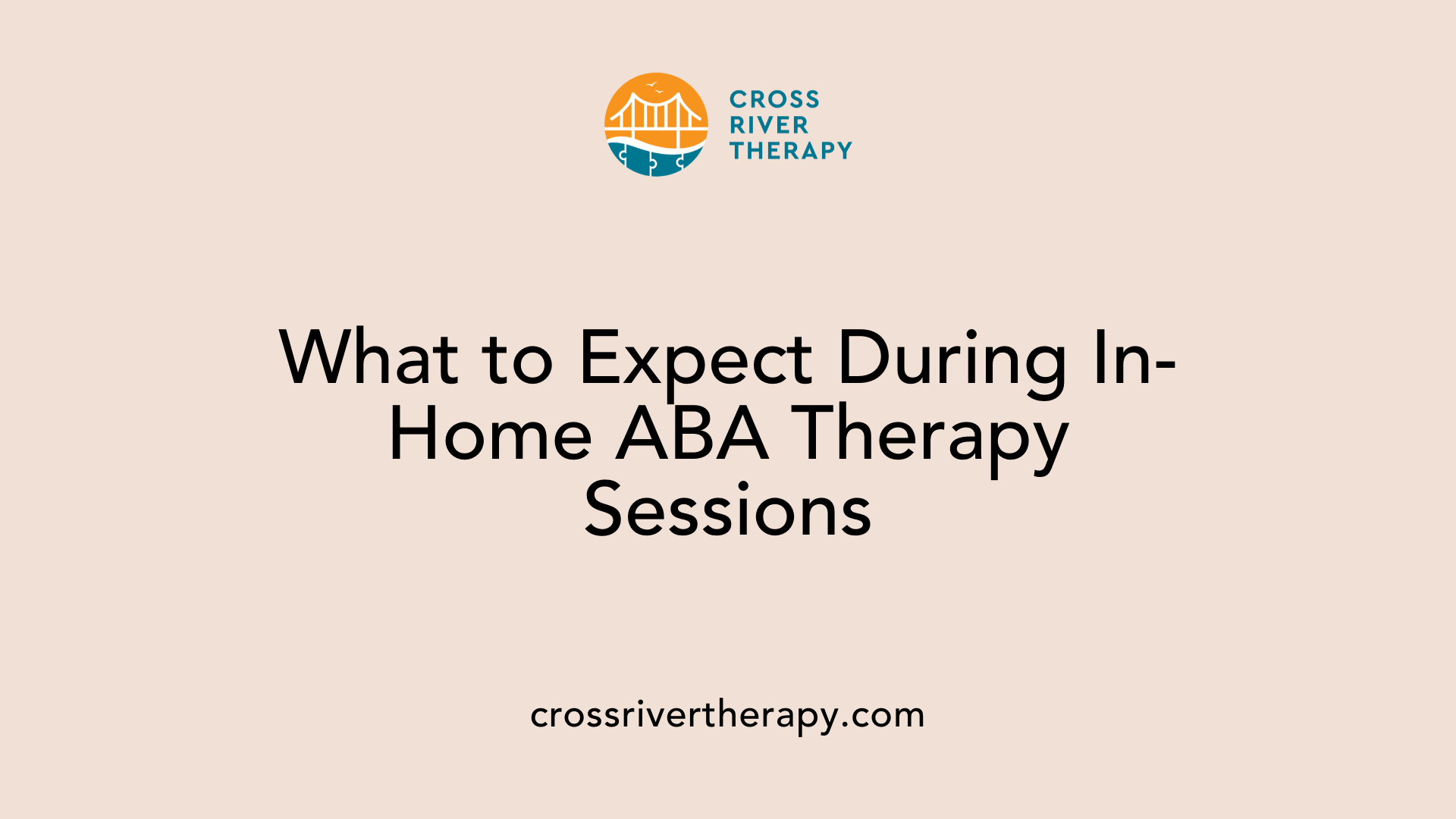At-Home ABA Therapy: How It Works and What to Expect
Unlocking Potential: The In-Home ABA Therapy Approach Explained
Understanding At-Home ABA Therapy
At-home Applied Behavior Analysis (ABA) therapy has emerged as a popular choice for autism spectrum disorder (ASD) treatment, providing a familiar and comfortable environment for children to develop essential life skills. This therapy adapts to a child's natural surroundings, enhancing skill acquisition and offering flexible scheduling that fits family routines. Through this approach, children benefit from personalized intervention strategies that can be integrated into daily activities, making the learning experience both relevant and effective. In this narrative, we explore how at-home ABA therapy works, its benefits, and what families can expect during these adaptive sessions.
The Mechanics of In-Home ABA Therapy

In-home therapy environment
In-home ABA therapy occurs within the child's own home, offering a familiar and comfortable space for learning. This home-based approach allows therapists to tailor sessions to the child's specific needs and integrates learning into everyday activities. The environment is often distraction-free, maximizing focus during therapy. A small, dedicated space equipped with engaging toys and materials can facilitate effective learning.
Benefits of natural settings
Utilizing the home environment for therapy provides numerous advantages. Children experience better skill generalization, as they can practice newly acquired behaviors in real-life contexts, making the learning process more relevant. Natural reinforcers present in the home, such as praise and daily routines, enhance motivation and engagement. Furthermore, therapy sessions often blend structured instruction with playful elements, making it enjoyable for younger children while reinforcing learning through fun activities.
Parental involvement
Parental engagement is a crucial element of in-home ABA therapy. Caregivers learn and implement strategies alongside therapists, fostering consistency in the application of skills throughout daily routines. Families can attend therapy sessions, enhancing understanding and communication of the child's needs. Programs, like those offered by the Al Jalila Foundation, train parents to manage behavioral challenges effectively. Studies show that parental involvement leads to greater confidence and better outcomes for children with ASD.
| Topic | Description | Importance |
|---|---|---|
| In-home therapy environment | Sessions in a familiar setting tailored to individual needs | Creates comfort and enhances focus during learning |
| Benefits of natural settings | Learning in real contexts leads to better skill application | Facilitates meaningful learning and engagement |
| Parental involvement | Caregivers learn strategies and participate in therapy | Essential for maintaining consistency and reinforcing skills learned |
How does ABA therapy work in the home?
ABA therapy in the home works by teaching children essential life skills in their natural environment, where they can practice these skills during everyday routines. Therapists integrate lessons into daily activities, making learning relevant and functional. Additionally, programs like the one sponsored by the Al Jalila Foundation provide valuable training for parents of children with Autism Spectrum Disorder (ASD), equipping them with effective strategies to manage behavioral challenges. Over a six-week course, parents reported significant improvements in their ability to control their child's behavior and gain confidence in their parenting skills. This combination of in-home ABA therapy and parental support enhances the overall effectiveness of interventions for children with ASD.
Implementing ABA Strategies at Home

How can parents perform ABA therapy at home?
Parents can play a vital role in implementing ABA therapy at home. Establishing consistent routines is essential for fostering a structured learning environment. Focusing on one specific behavior at a time allows for clearer learning and reinforcement.
Key techniques include:
- Positive reinforcement: Rewarding desired behaviors encourages children to repeat them.
- Prompting: This involves giving cues to help children learn new skills.
- Task analysis: Breaking down tasks into smaller, manageable steps makes learning easier.
Communication with a child's therapist is crucial. Regular discussions ensure that techniques are properly implemented and maintain consistency with the treatment plan.
Why is data collection important in home ABA therapy?
Data collection is essential for tracking progress. Parents should keep records of behaviors and responses to intervention strategies. This documentation helps therapists evaluate the effectiveness of techniques and make necessary adjustments. Analyzing data ensures the ABA strategies used are tailored to meet the child's evolving needs.
The benefits of integrating ABA into daily life
Integrating ABA techniques into daily activities, like meals and playtime, provides opportunities for reinforcement in a natural setting. This approach helps children's learning become ingrained in their everyday routines, enhancing skill generalization and improving their overall development.
What to Expect During Sessions

Session Structure
In-home ABA therapy sessions are structured to focus on improving desired behaviors and social skills in a familiar setting. Each session typically includes a combination of structured instruction and play-based activities that are tailored to meet your child’s unique needs. A dedicated space in your home is essential, as it helps minimize distractions and promotes effective engagement. Sessions usually last between 1 to 3 hours and can be scheduled 2 to 5 times a week based on your child's goals and progress.
Preparing the Home Setting
Preparing your home for therapy is an important step in facilitating effective sessions. Designate a quiet, organized area, free from distractions, where therapy can take place. Equip this space with toys and activities that your child enjoys, as these will foster engagement and motivation during sessions. Additionally, ensure that your child is alert and ready to participate, maximizing the benefits of each session.
Family Involvement
Family involvement is a crucial aspect of in-home ABA therapy. Parents and siblings are encouraged to actively participate, learning techniques that can be seamlessly integrated into daily routines. This involvement helps reinforce the skills learned during sessions and strengthens family bonds. Open communication with your therapist is vital, as it allows for ongoing adjustments based on your child’s progress, ensuring a tailored approach to their development.
The Vital Role of Parents

What roles do parents have during in-home ABA therapy?
Parents play a critical role in in-home ABA therapy by actively participating in sessions and implementing strategies recommended by the therapist. Their involvement makes a significant difference in the effectiveness of the therapy.
Creating a comfortable and supportive atmosphere, parents help foster their child's development. They reinforce positive behaviors consistently, allowing children to practice essential skills within the familiar setting of their home. This familiarity is crucial as it enhances the child's confidence and comfort level.
In addition to focusing on the child with autism, involving siblings can foster social skill development and strengthen family bonds. In-home therapy sessions often encourage siblings to participate in activities, promoting cooperation and interaction among family members.
Overall, parents' engagement supports skill generalization, which leads to better outcomes for their child. These skills learned in a comforting environment can be applied beyond home, facilitating smoother transitions into social situations and other settings.
Incorporating parents into the therapy process is beneficial not just for the child, but for the entire family dynamic, helping everyone grow together.
Accessing Free ABA Resources
What are some free resources for ABA therapy activities?
Numerous free resources exist to enhance ABA therapy activities, supporting both families and professionals. Websites provide invaluable tools such as printable worksheets, flashcards, and structured activity schedules that reinforce key skills for children with autism.
Some popular resources include:
- Themed Flashcards: These often focus on critical areas like emotions, social skills, and communication, making them essential for teaching and practice.
- Social Skills Activity Worksheets: These worksheets cover vital skills for making friends, managing frustration, and navigating social interactions.
- Token Economy Materials: Resources for implementing a token economy can help motivate children and reinforce positive behaviors.
- Fine Motor Skills Activities: These activities are designed to strengthen motor skills through engaging tasks.
- Social Stories: Downloadable social stories provide insights into various social situations, helping children understand and manage these contexts better.
Overall, these resources are instrumental in maintaining therapy continuity and giving families effective tools to foster skill development across different environments.
Personalizing Therapy Through Assessment
Initial and Ongoing Assessments
In-home ABA therapy begins with a thorough initial assessment of the child’s abilities and challenges. This first step allows therapists to understand the unique needs of each child, forming the foundation for a personalized treatment plan. Typically, therapists evaluate a child's current skills, behavioral concerns, and learning preferences.
To ensure that the therapy continues to meet the child’s evolving needs, assessments are conducted regularly – usually every six months. These reevaluations help track progress and determine if modifications to the treatment plan are necessary, facilitating ongoing improvement.
Tailoring Treatment Plans
Once the initial assessment is complete, a tailored treatment plan is developed based on the findings. This plan not only outlines specific goals but also incorporates strategies and techniques that cater to the child’s learning style. For instance, the therapist might utilize prompts, shaping, or functional communication training, all aimed at fostering development in a familiar environment.
BCBA's Role
A crucial player in this process is the Board Certified Behavior Analyst (BCBA). The BCBA oversees the assessment process, formulates the treatment plan, and ensures that it aligns with best practices in ABA therapy. They also provide supervision and support to Registered Behavior Technicians (RBTs) who carry out the therapy sessions. Families can rely on their expertise to adjust strategies dynamically, ensuring that therapy remains effective and responsive to the child’s growth.
Benefits of the Familiar Environment

Comfort and Security
In-home ABA therapy sets the stage for learning in a secure setting where children feel at ease. The familiar surroundings can reduce anxiety and boost engagement, allowing children to focus on acquiring new skills without the distractions often present in unfamiliar settings. This comfort encourages them to explore and learn, making the therapy more effective.
Independence and Social Skills
A significant advantage of in-home ABA therapy is the opportunity for children to develop crucial independence and social skills. Sessions often incorporate interactions with family members and peers, blending learning with real-life experiences. This integration helps children practice essential skills, such as personal hygiene and meal preparation, while building confidence through familiar social interactions.
Flexibility and Family Collaboration
Families enjoy the flexibility of scheduling that comes with in-home therapy, allowing them to weave sessions into daily routines. This format encourages active family involvement, as parents learn techniques they can reinforce throughout daily life. Such collaboration leads to greater consistency in the child's learning, enhancing the overall effectiveness of the therapy.
The Future of ABA At-Home Therapy
As more families explore the potential of at-home ABA therapy, its personalized approach offers significant promise for children with autism spectrum disorder. By fostering a supportive environment where skills can be practiced naturally, families contribute actively to their child's development, enhancing outcomes across social, behavioral, and academic dimensions. Through collaborative efforts with therapists and utilizing available resources, parents can ensure that interventions are both effective and adaptable to their child's evolving needs, making at-home ABA therapy a viable and dynamic option moving forward.
References
- What To Expect From In-Home ABA Therapy - Bluesprig Autism
- A Parent's Guide To In-home ABA Therapy - Bluesprig Autism
- ABA Therapy at Home: All You Need to Know
- What to Expect During an In-Home Visit
- Applied Behavior Analysis (ABA) | Autism Speaks
- Your Guide to In-Home ABA Therapy
- In-Home ABA Therapy - Surpass Behavioral Health



